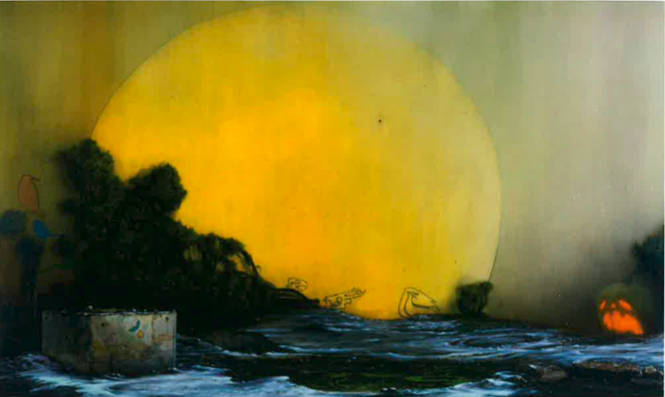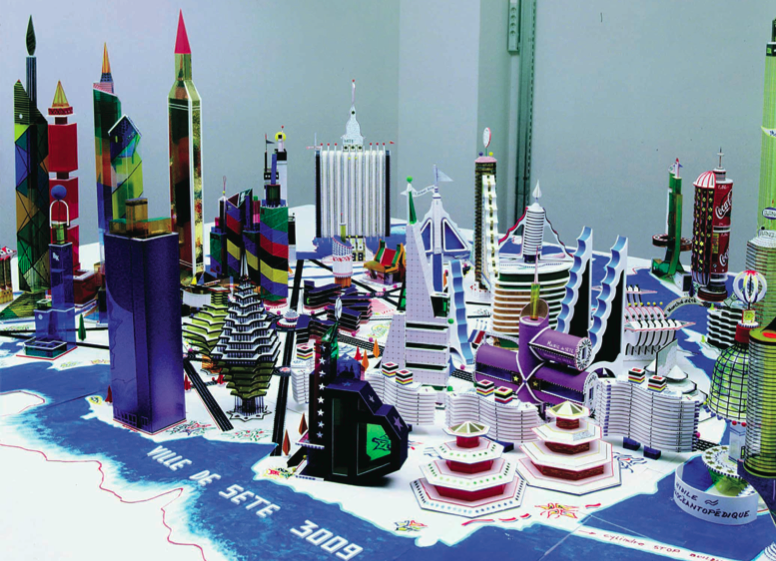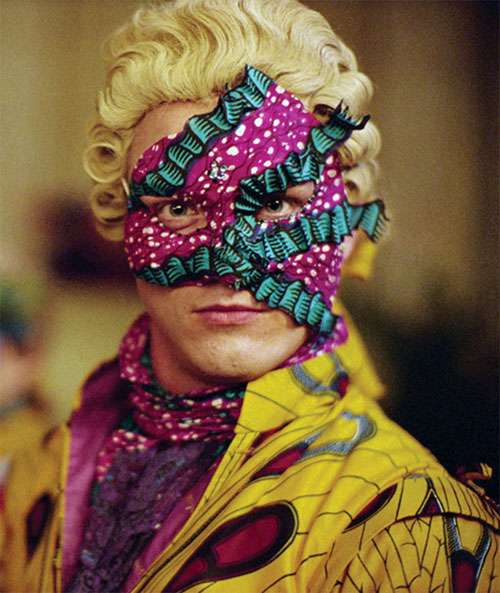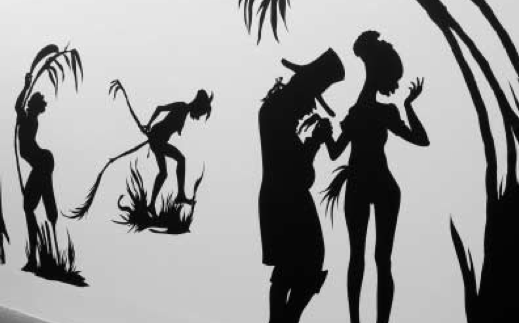Painting as a Repository: The Remains of Our Days in the Paintings of Nigel Cook
30 March 2006

Morning Is Broken, 2004, oil on canvas, 220 x 370cm ARTIS/Francois Pinault, France
30 March 2006

Morning Is Broken, 2004, oil on canvas, 220 x 370cm ARTIS/Francois Pinault, France
Spring 2006

Bodys Isek Kingelez (Germany/Congo), La ville de Sete en 3009, 2000, paper, cardboard, paint, sequins, glue; covered by polyester in wooden frame, 210 x 300 x 89 cm. Collection Musee International des Arts Modestes, Sete, France.
A social and historical critique which does not consider the conflictual structure of its own discursive operations will only produce the constraints it is seeking to displace. (Weber 111)
‘Africa Remix’, the recent showcase of African art at the Hayward Gallery in London, prompted a number of mixed but largely positive critical responses. In the Observer, Emma Lindsey extolled the ‘ground-breaking and electrifying work’ (26) on show and encouraged everyone to see it. Elsewhere, and in a more mixed response in the Guardian, Jonathan Jones was impressed by the art in the show but equivocal about his own reaction to it. Towards the end of his article, Jones wrote ‘but that’s enough criticism. In the end, this is a subject I probably shouldn’t even be writing about. What do I know? Racism is limitless’ (22). The sense of bemusement in Jones’s article is worth dwelling on here, not least for the fact that its disposition reappears in more ‘critical’ reviews of ‘Africa Remix’.[1] In Art Monthly, Sally O’Reilly’s review of the same show started with the above quote from Jones’s article and went on to engage in its own series of caveats. ‘It was not my idea of fun to review ‘‘Africa Remix’’ either,’ O’Reilly wrote, ‘and the idea would be horrifying, I imagine, to most European art critics especially those from European nations’ (27). For O’Reilly, this ostensible conundrum is made manifest in a number of ‘double binds’ including, but not limited to, the manner in which postcolonial liberalism can often translate into ‘colonialism itself when applied to interpretations of ‘‘the other’’’ (27). In the subsequent issue of Art Monthly, O’Reilly was taken to task on the letters pages for both an ‘unreflexive’ response to the show and the reiteration of a view of African art as somehow culturally (and hence critically) other (Jelinek 14). To Art Monthly’s credit – being one of the few journals in this country, alongside Third Text, to consider the question of art criticism and its purpose to be worthy of any enquiry at all – it allowed this discussion to continue into the following issue where Jones’s take on the show was criticised for being ‘intellectually cowardly’ – a response, in sum, that merely re-codified a number of obstacles to formulating an effective critical response (LaFuente 17).
Fall 2005

Un Ballo in Maschera (A Masked Ball), 2004, color digital video, 32-minute loop. Images courtesy of the artist, James Cohan Gallery, New York, and Stephen Friedman Gallery, London.
Yinka Shonibare first came to widespread attention through his use of Dutch wax fabric, which he has used both as the ground of his paintings and to clothe his sculptures. This bright and distinctive fabric was originally produced in Dutch Indonesia, where no market was found for it, and subsequently copied and produced by the English, who eventually sold it to West Africans, for whom it became a popular everyday item of clothing. It also, crucially, became a sign of identitarian “authenticity” both in Africa and, later, for Africans in England. A colonial invention, Dutch wax fabric offers itself as both a fake and yet “authentic” sign of Africanness, and Shonibare’s use of it in his paintings and sculptures accentuates a politics of (in)authenticity by simultaneously presenting both the ideal of an “authentic” identity and identity as a “fabrication.” Although he has been producing mostly installation-based work of late, Shonibare is also an accomplished painter, and that is where his practice began in the ’80s. It is also easy to overlook, in all the theorizing about postcoloniality and the politics of identity, the amount of amusement and frivolity he can pack into his work.
Summer 2005
March 2005

Kara Walker, Grub For Sharks: A Concession for the Negro Populace, 2004, Courtesy of the Artist and Brent Sikkema, Photograph Tate Liverpool 2004.
In 1840 J M W Turner painted Slavers throwing overboard the Dead and Dying – Typhoon Comingon (The Slave Ship). The subject matter concerned the ‘Zong’, a slave ship that had departed from Liverpool in the 1780s en route to Jamaica where, on arrival, the master of the ship had slaves – both dead and alive – thrown into the shark-infested seas. This nefarious practice was regularly employed by slave traders to claim insurance monies for slaves who had become so enfeebled by the journey they could not be sold on arrival. The issue was one of remuneration: if sick slaves died a ‘natural’ death, the ship’s owners received no compensation; if, however, slaves were thrown overboard in order to expedite the ship’s passage in the face of a possibly ruinous storm, the insurers would pay out. In sum, the loss of a few slaves, when compared with the loss of a ship, was infinitely more palatable to insurance brokers and slave traders alike. (more…)
March 2003
Since its inception in 1955, Documenta has established itself as an institution that not only presents a survey of contemporary art historical issues but, more recently, the social and political milieu in which we live. Add to this the considerable amount of critical attention focused on who is chosen to curate Documenta, and the entire project would appear to be becoming more of a multidisciplinary inquiry into the ethics of curation and the institutionalising effect of exhibitions per se. In opting to not only investigate the structures and conditions of present-day artistic production but also interrogate its institutional status, Documenta XI appeared to be indicative of this trend. As the first major exhibition of the twenty-first century, moreover, this interrogative stance is hardly surprising – indeed, given the wider developments in museological, curatorial and institutional conventions, it would seem to be obligatory. (more…)